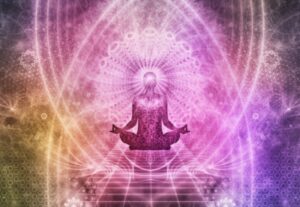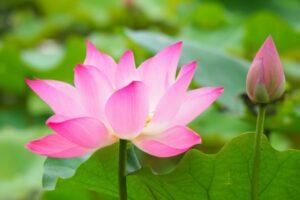- Intras are recited as part of meditation or prayer to help focus the mind, promote inner peace and spiritual connection.
- It’s important to note that the effectiveness and meaning of mantras can vary from person to person. The key is to find a mantra that resonates with you personally and helps you in your spiritual journey.
- Mantras are used to embody certain divine energies or powers.
- Mantras can be a means of purifying the mind, bringing about inner peace and expanded consciousness.
- When chanting the mantra, it is preferable to do it in a quiet and calm place.
Intras are recited as part of meditation or prayer to help focus the mind, promote inner peace and spiritual connection.
Mantras are sacred sounds, words, or phrases that are repeated either silently or aloud during meditation or prayer. They are commonly used in various spiritual traditions, including Hinduism, Buddhism, and Sikhism. The repetition of mantras serves as a focal point for the mind, helping to quiet mental chatter and attain a state of deep concentration.

Mantras can be specific words or phrases in a particular language or can be simple sounds or syllables with no specific meaning. The repetition of the mantra creates a rhythm that can induce a state of calmness and promote a sense of inner peace.

In addition to aiding concentration and focus, mantras are believed to ha ve deeper spiritual effects. They are often associated with specific qualities or deities and are used to invoke those qualities or establish a connection with the divine. Some people also believe that mantras ha ve the power to transform consciousness and bring about positive changes in one’s life.

The choice of mantra can vary based on personal preference, spiritual tradition, or guidance from a teacher. Popular mantras include “Om” or “Aum” in Hinduism, “Om Mani Padme Hum” in Buddhism, and “Sat Nam” in Sikhism. However, there are countless other mantras a vailable, each with its own unique purpose and significance.
It’s important to note that the effectiveness and meaning of mantras can vary from person to person. The key is to find a mantra that resonates with you personally and helps you in your spiritual journey.
The mantra is called Om, and it is a representative mantra of Hinduism and Buddhism.

The syllable “Om” or “Aum” is indeed a significant and widely recognized mantra in both Hinduism and Buddhism. It holds deep spiritual significance and is considered a sacred sound in these traditions.

In Hinduism, “Om” is considered the primordial sound, representing the essence of the ultimate reality or the supreme consciousness. It is believed to encompass the past, present, and future and is chanted or repeated as a way to connect with the divine, increase spiritual awareness, and attain a state of unity with the universe.

In Buddhism, “Om” is associated with the mantra “Om Mani Padme Hum,” which is a central mantra in Tibetan Buddhism. The mantra is closely associated with a valokiteshvara, the bodhisattva of compassion. It is believed to embody the qualities of compassion and enlightenment and is chanted as a means to cultivate these qualities within oneself and to benefit all sentient beings.

The chanting or repetition of the mantra “Om” or “Om Mani Padme Hum” is often done during meditation, prayer, or other spiritual practices to focus the mind, bring inner peace, and deepen one’s connection with the spiritual realm.

It’s important to note that while “Om” is commonly associated with Hinduism and “Om Mani Padme Hum” with Buddhism, these mantras can be practiced and appreciated by individuals from different spiritual backgrounds. The power and significance of these mantras transcend specific religious boundaries and can be embraced as universal expressions of spiritual connection and inner transformation.
Mantras are used to embody certain divine energies or powers.
Mantras are often used to embody or invoke certain divine energies, powers, or qualities. They are considered potent tools for connecting with and harnessing specific spiritual vibrations or aspects of the divine.

In various spiritual traditions, specific mantras are associated with particular deities, spiritual figures, or concepts. By chanting or repeating these mantras, individuals seek to attune themselves to the energy and essence represented by those divine beings or qualities.

For example, in Hinduism, the mantra “Om Namah Shivaya” is associated with Lord Shiva, the deity representing transformation and auspiciousness. Chanting this mantra is believed to invoke the qualities of Lord Shiva, such as inner peace, inner strength, and liberation from limitations.

Similarly, in Hinduism, the mantra “Om Shanti Shanti Shanti” is often recited to invoke peace at different levels: physical, mental, and spiritual. The repetition of the mantra is intended to cultivate and spread peace within oneself and the surrounding environment.

In Buddhism, the mantra “Om Mani Padme Hum” is associated with a valokiteshvara, the bodhisattva of compassion. This mantra is believed to embody the compassionate qualities of a valokiteshvara and chanting it is a means of invoking and cultivating compassion within oneself.

It’s important to note that while mantras are used to embody certain energies or powers, they are not limited to religious or spiritual contexts. Mantras can also be used in secular settings for self-improvement, stress reduction, or personal development. The underlying principle remains the same – the repetition of specific sounds or words to focus the mind, create a positive state, and connect with desired qualities or energies.
Mantras can be a means of purifying the mind, bringing about inner peace and expanded consciousness.
Mantras are often used as a means of purifying the mind, bringing inner peace, and expanding consciousness. The rhythmic repetition of mantras can ha ve a transformative effect on the mind and facilitate various positive changes within oneself.
Purification of the Mind
Mantras can serve as a tool for purifying and calming the mind. By focusing on the repetition of a mantra, one can gradually quiet mental chatter, reduce distractions, and cultivate a sense of mental clarity and purity. The process of chanting or repeating a mantra helps to bring the mind into a state of concentration and single-pointedness, allowing for a deeper sense of inner stillness and tranquility.
Inner Peace
Mantras ha ve the potential to bring about a profound sense of inner peace. The vibrations created by the repetition of mantras resonate within the body and mind, promoting relaxation and a release of tension. As the mind becomes absorbed in the mantra, it becomes detached from external disturbances and experiences a state of serenity and contentment.
Expanded Consciousness
Mantras can also facilitate expanded consciousness and spiritual growth. The repetitive nature of chanting or reciting mantras can induce a meditative state, leading to a heightened level of awareness and a deeper connection with one’s inner self. This expanded state of consciousness can provide insights, inspiration, and a sense of unity with the divine or the universal consciousness.

It’s important to note that the effects of mantras can vary from person to person. Some individuals may experience immediate shifts in their state of mind and consciousness, while others may require consistent practice over time to notice significant changes. Regular and sincere practice of mantra repetition, combined with an open and receptive mindset, can enhance the benefits and contribute to the overall well-being of an individual.
When chanting the mantra, it is preferable to do it in a quiet and calm place.
it is generally preferable to chant or recite mantras in a quiet and calm place. Creating a serene and peaceful environment can enhance the effectiveness of your mantra practice and facilitate a deeper sense of focus and inner stillness. Here are a few reasons why a quiet and calm place is often recommended

Reduced Distractions: A quiet environment helps minimize external distractions, allowing you to direct your attention inward and maintain a more concentrated focus on the mantra. By choosing a tranquil setting, you can create a space that supports a meditative state and helps you stay centered during your practice.

Enhanced Concentration: Mantra repetition requires concentration and attentiveness. Being in a quiet place can assist in sustaining your focus on the mantra, reducing the likelihood of your mind wandering or getting easily distracted. It allows you to create a dedicated space solely for your practice, which can foster a sense of discipline and commitment.

Deepening the Experience: When you are in a calm and peaceful environment, it becomes easier to connect with the subtle vibrations and deeper layers of your being. The absence of external disturbances supports a more profound experience of the mantra’s resonance within you, helping you to attune to its energy and meaning on a deeper level.

However, it’s important to note that while a quiet and calm place is often beneficial, it is not always possible to ha ve complete silence or solitude. You can adapt your practice to suit your circumstances. Some individuals may find it helpful to use earplugs, play soft instrumental music, or utilize other methods to create a sense of tranquility, even in a busier or noisier environment.

Ultimately, the most important aspect is your intention and dedication to the practice. Regardless of the external surroundings, your commitment and sincere engagement with the mantra can still yield significant benefits.


